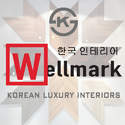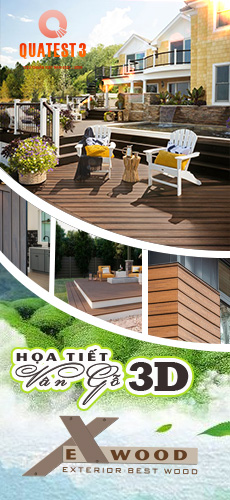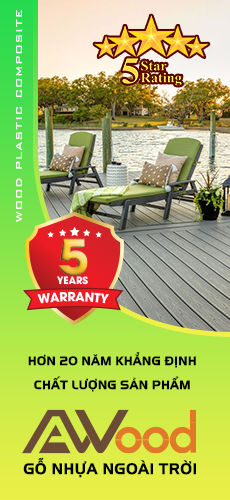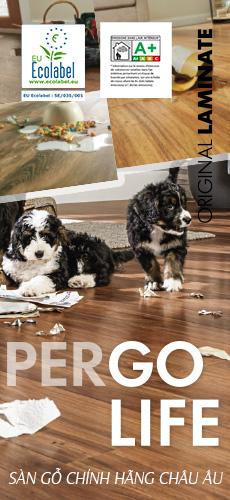-
KHO SÀN GỖ
QUẬN 2
91 Lương Định Của, Phường Bình An, Quận 2, HCM
Tel/Zalo: 0946 8888 91 -
KHO SÀN GỖ
QUẬN 6
68A Đặng Nguyên Cẩn, Phường 14, Q6, HCM
Tel/Zalo: 097 8888 395 -
KHO SÀN GỖ
QUẬN 7
444A Nguyễn Văn Linh, Tân Phú, Quận 7, HCM
Tel/Zalo: 091 8888 923 -
KHO SÀN GỖ
QUẬN 8
146 Phạm Hùng, X. Bình Hưng, Bình Chánh, HCM
Tel/Zalo: 091 8888 315 -
KHO SÀN GỖ
QUẬN 9
15 Dương Đình Hội, Phước Long B, Quận 9, HCM
Tel/Zalo: 091 8888 951 -
KHO SÀN GỖ
QUẬN 10
209 Tô Hiến Thành, Phường 13, Quận 10, HCM
Tel/Zalo: 0913 8888 01 -
KHO SÀN GỖ
QUẬN 12
484 Nguyễn Văn Quá, Đông Hưng Thuận, Quận 12, HCM
Tel/Zalo: 0913 8888 20 -
KHO SÀN GỖ
BÌNH TÂN
254 Nguyễn Thị Tú, Bình Hưng Hoà B, Bình Tân, HCM
Tel/Zalo: 084 8888 254 -
KHO SÀN GỖ
BÌNH CHÁNH
114 Đường số 12 KDC Phong Phú 4, Bình Chánh, HCM
Tel/Zalo: 090 8888 795 -
KHO SÀN GỖ
BÌNH THẠNH
443 Bạch Đằng, Phường 2, Quận Bình Thạnh, HCM
Tel/Zalo: 091 8888 443 -
KHO SÀN GỖ
CỦ CHI
410 Tổ 1, Khu Phố 4, Tỉnh lộ 8, Củ Chi, HCM
Tel/Zalo: 091 8888 755 -
KHO SÀN GỖ
GÒ VẤP
957 Phan Văn Trị, Phường 7, Quận Gò Vấp, HCM
Tel/Zalo: 092 8888 181 -
KHO SÀN GỖ
HÓC MÔN
249 Tô Ký, Tân Xuân, Hóc Môn, HCM
Tel/Zalo: 079 8888 249 -
KHO SÀN GỖ
KHA VẠN CÂN
867 Kha Vạn Cân, Linh Tây, Thủ Đức, HCM
Tel/Zalo: 081 8888 528 -
KHO SÀN GỖ
NHÀ BÈ
số 9 Nguyễn Hữu Thọ, Phước Kiển, Nhà Bè, HCM
Tel/Zalo: 089 8888 081 -
KHO SÀN GỖ
PHÚ NHUẬN
270/10 Nguyễn Trọng Tuyển, Phường 8, Phú Nhuận, HCM
Tel/Zalo: 091 8888 174 -
KHO SÀN GỖ
TÂY HÒA
137A Tây Hoà, Phước long A, Quận 9, Thủ Đức, HCM
Tel/Zalo: 085 888 8067 -
KHO SÀN GỖ
QUẬN TÂN BÌNH
760 Lạc Long Quân, Phường 9, Quận Tân Bình, HCM
Tel/Zalo: 091 88888 75 -
KHO SÀN GỖ
TÂN BÌNH
355 Cộng Hòa, Phường 13, Quận Tân Bình, HCM
Tel: 091 8888 032 -
KHO SÀN GỖ
TÂN PHÚ
249 Trần Thủ Độ, Phú Thạnh, Tân Phú, HCM
Tel/Zalo: 090 8888 916 -
KHO SÀN GỖ
TÂN THÀNH
51 Lê Đình Thụ, Tân Thành, Tân Phú, HCM
Tel/Zalo: 090 8888 240 -
KHO SÀN GỖ
TÂN TẠO
429/39 Chiến Lược, P. Bình Trị Đông A, Bình Tân, HCM
Tel/Zalo: 091 8888 721 -
KHO SÀN GỖ
THỦ ĐỨC
610 Quốc Lộ 13, Hiệp Bình Phước, Thủ Đức, HCM
Tel/Zalo: 081 8888 610 -
KHO SÀN GỖ
THỦ ĐỨC(Tam Phú)
234 M Tam Bình, Tam Phú, Thủ Đức, HCM
Tel/Zalo: 090 848 0002 -
KHO SÀN GỖ
CẦN GIỜ
2795 Huỳnh Tấn Phát, Ấp 6, Phú Xuân, Nhà Bè, HCM
Tel/Zalo: 089 8888 723 -
KHO SÀN GỖ
SÀI GÒN
223 Phan Huy Ích, Phường 14, Gò Vấp, HCM
Tel/Zalo: 091 8888 223
-
KHO SÀN GỖ
HÀ NỘI
342 Giải Phóng, Phương Liệt, Thanh Xuân, Hà Nội
Tel: 091 8888 601 -
KHO SÀN GỖ
HÀ ĐÔNG
Số 01, BT5 Khu đô thị Phú Lương, Hà Đông, Hà Nội
Tel: 091 8888 619 -
KHO SÀN GỖ
TÂY HỒ
586 Lạc Long Quân, P. Nhật Tân, Q. Tây Hồ. Hà Nội
Tel: 091 8888 927 -
KHO SÀN GỖ
SÓC SƠN
68 Đường 16, Thôn Phú Thọ, Đông Xuân, Sóc Sơn, Hà Nội
Tel: 091 8888 561 -
KHO SÀN GỖ
MỸ ĐÌNH
123 Nguyễn Văn Giáp, Nam Từ Liêm, Hà Nội
Tel: 091 8888 122 -
KHO SÀN GỖ
LONG BIÊN
583 Ngô Gia Tự, Đức Giang, Long Biên, Hà Nội
Tel: 091 8888 270
-
KHO SÀN GỖ
ĐÀ NẴNG
65 Võ Chí Công, Hòa Xuân, Cẩm lệ, Đà Nẵng
Tel: 093 8888 957 -
KHO SÀN GỖ
CẨM LỆ ĐÀ NẴNG
34 Ông Ích Đường, Thọ Hòa Tây, Cẩm Lệ, Đà Nẵng
Tel: 091 8888 715 -
KHO SÀN GỖ
HÒA XUÂN ĐÀ NẴNG
113C Võ Chí Công, Hòa Xuân, Cẩm lệ, Đà Nẵng
Tel: 091 8888 473
-
KHO SÀN GỖ
BIÊN HÒA
126B, Quốc Lộ 1A, khu phố 4, Tân Hiệp, Biên Hòa, Đồng Nai
Tel/Zalo: 089 8888 005 - 091 8888 647 -
KHO SÀN GỖ
TRẢNG BOM
Số 5/4 Lộc Hoà, QL1A, Tây Hoà, Trảng Bom, Ðồng Nai
Tel/Zalo: 091 8888 061 -
KHO SÀN GỖ
LONG THÀNH
Tổ 10 Phạm Văn Đồng, khu Cầu Xéo, Long Thành, Đồng Nai
Tel/Zalo: 091 8888 146 -
KHO SÀN GỖ
GIA KIỆM
35/2E Quốc lộ 20, Thống Nhất, Ðồng Nai
Tel: 090 8888 635 -
KHO SÀN GỖ
XUÂN LỘC
404 Hùng Vương, Gia Ray, Xuân Lộc, Đồng Nai
Tel: 081 8888 433 -
KHO SÀN GỖ
ĐỊNH QUÁN
54 Phố 2, Ấp 3, Phú Lợi, Định Quán, Đồng Nai
Tel: 081 8888 764 -
KHO SÀN GỖ
LONG KHÁNH
Số 1 Quốc Lộ 1A , Đường 21 tháng 4 , KP Núi Tung , TP. Long Khánh , Đồng Nai
Tel: 085 8888 781
-
KHO SÀN GỖ
BÀ RỊA
75 Nguyễn Tất Thành, Phước Nguyễn, Bà Rịa, Bà Rịa - Vũng Tàu, Vietnam
Tel/Zalo: 0813 9999 72
-
SHOWROOm SÀN GỖ
VŨNG TÀU
170A Huyền Trân Công Chúa, Phường 8, Vũng Tàu
Tel: 091 8888 165 -
KHO SÀN GỖ
VŨNG TÀU
117 Huyền Trân Công Chúa, Phường 8, Vũng Tàu
Tel: 081 8888 165
-
KHO SÀN GỖ
BÌNH DƯƠNG
62 Phạm Ngọc Thạch, Hiệp Thành, Thủ Dầu Một, Bình Dương
Tel/Zalo: 089 8888 062 - 090 8888 062
-
KHO SÀN GỖ
BÌNH PHƯỚC
729 Quốc lộ 14, Tân Bình, Đồng Xoài, Binh Phước
Tel/Zalo: 089 8888 729 - 090 8888 193
-
KHO SÀN GỖ
TÂY NINH
445 Lạc Long Quân, Hiệp Tân, Hoà Thành, Tây Ninh
Tel: 089 8888 250 -
KHO SÀN GỖ
TRẢNG BÀNG
244A Nguyễn Văn Rốp, Trảng Bàng, Tây Ninh
Tel: 070 8888 170
-
KHO SÀN GỖ
KHÁNH HÒA
442 Lê Hồng Phong, Phước Hải, Nha Trang, Khánh Hoà
Tel: 090 8888 906 -
KHO SÀN GỖ
NHA TRANG
B1 Chung Cư Lê Hồng Phong, Phước Hải, Nha Trang, Khánh Hoà
Tel: 091 8888 997
-
KHO SÀN GỖ
LA GI
Số 4 Nguyễn Trường Tộ, Phường 10, Lagi, Bình Thuận
Tel: 090 8888 085 -
KHO SÀN GỖ
PHAN THIẾT
64 Đại Lộ Hùng Vương, Phú Thủy, Phan Thiết
Tel: 091 8888 742
-
KHO SÀN GỖ
PHAN RANG
95 QL1, Ngã 3 Long bình, Ninh Phước, Phan Rang, Ninh Thuận
Tel: 082 8888 095
-
KHO SÀN GỖ
BẢO LỘC
15B Nguyễn Văn Cừ, Lộc Sơn, Bảo Lộc, Lâm Đồng
Tel: 090 8888 053 -
KHO SÀN GỖ
ĐỨC TRỌNG
358 Quốc Lộ 20, Liên Nghĩa, Đức Trọng, Lâm Đồng
Tel/Zalo: 090 8888 053 -
KHO SÀN GỖ
ĐÀ LẠT
29A Xô Viết Nghệ Tĩnh, Phường 7, Đà Lạt, Lâm Đồng
Tel/Zalo: 091 8888 506
-
KHO SÀN GỖ
GIA LAI
373 Phạm Văn Đồng, Pleiku, Gia Lai
Tel/Zalo: 089 8888 373 - 091 8888 350 -
KHO SÀN GỖ
PLEIKU
30/12 Sư Vạn Hạnh, Pleiku, Gia Lai
Tel/Zalo: 089 8888 373
-
KHO SÀN GỖ
KON TUM
61 Phạm Văn Đồng, Lê Lợi, Kon Tum
Tel/Zalo: 091 8888 137
-
KHO SÀN GỖ
ĐẮK LẮK
105 Hà Huy Tập, Tân Lợi, Buôn Ma Thuột, Đắk Lắk.
Tel: 091 8888 945 -
KHO SÀN GỖ
BUÔN MA THUỘT
38 Nguyễn Hữu Thọ, Tân An, Buôn Ma Thuột, Đắk Lắk.
Tel: 0855 8888 02
-
KHO SÀN GỖ
ĐẮK NÔNG
30 Lê Lai, Nghĩa Trung, Gia Nghĩa, Đắk Nông
Tel: 090 8888 537
-
KHO SÀN GỖ
QUY NHƠN
114 Đào Tấn, Nhơn Bình, Qui Nhơn, Bình Định
Tel: 090 8888 776 -
KHO SÀN GỖ
HOÀI NHƠN
348 Quang Trung, Tam Quan, Hoài Nhơn, Bình Định
Tel: 0965 8888 43 -
KHO SÀN GỖ
BÌNH ĐỊNH
1213 Trần Hưng Đạo, Đống Đa, Quy Nhơn, Bình Định
Tel: 082 8888 920
-
KHO SÀN GỖ
PHÚ YÊN
220 Nguyễn Văn Linh, Phú Lâm, Tuy Hòa, Phú Yên
Tel: 090 8888 057 -
KHO SÀN GỖ
TUY HÒA
138 Lê Lợi, Phường 4, Tuy Hòa, Phú Yên
Tel: 082 8888 078
-
KHO SÀN GỖ
QUẢNG NGÃI
180 Hai Bà Trưng, Lê Hồng Phong, Quảng Ngãi
Tel: 091 8888 274
-
KHO SÀN GỖ
QUẢNG NAM
130 Nguyễn Văn Trỗi, Tân Thạnh, Tam Kỳ, Quảng Nam
Tel: 094 8888 130
-
KHO SÀN GỖ
HUẾ
34 Hoàng Quốc Việt, An Đông, Huế, Thừa Thiên Huế
Tel: 0764 8888 27
-
KHO SÀN GỖ
QUẢNG TRỊ
399 Quốc Lộ 9, Đông Hà, Quảng Trị
Tel: 0969 8888 74
-
KHO SÀN GỖ
QUẢNG BÌNH
545A Lý Thường Kiệt, Đồng Phú, Đồng Hới, Quảng Bình.
Tel: 094 8888 973
-
KHO SÀN GỖ
NGHỆ AN
52, Phạm Đình Toái, Hà Huy Tập, Vinh, Nghệ An
Tel: 091 8888 480 -
KHO SÀN GỖ
CỬA LÒ
350 Phạm Nguyễn Du, Nghi Hải, Cửa Lò, Vinh, Nghệ An
Tel: 0902 8888 37 -
KHO SÀN GỖ
QUÁN HÀNH
Đ. Xã Đoài, Khối 6, Nghi Lộc, Nghệ An
Tel: 094 8888 231
-
KHO SÀN GỖ
LONG AN
90 Hùng Vương, Tân An, Long An
Tel: 091 8888 097
-
KHO SÀN GỖ
TIỀN GIANG
286-288 Nguyễn Công Bình, Mỹ Tho, Tiền Giang
Tel: 079 8888 282
-
KHO SÀN GỖ
BẾN TRE
712 Ấp Hòa Trung, Sơn Hòa, Châu Thành, Bến Tre.
Tel: 083 8888 065
-
KHO SÀN GỖ
VĨNH LONG
94 Ba Tháng Hai, Phường 1, Vĩnh Long
Tel: 092 8888 955
-
KHO SÀN GỖ
ĐÔNG THÁP
68 Vành Đai, tổ 18, Hoà Khánh, Hòa An, Cao Lãnh, Đồng Tháp
Tel: 0898 888 937
-
KHO SÀN GỖ
CẦN THƠ
218 Đường 3-2, Hưng Lợi, Ninh kiều, Cần Thơ
Tel: 091 8888 677
-
KHO SÀN GỖ
SÓC TRĂNG
417 Tôn Đức Thắng,Phường 5, Sóc Trăng
Tel: 083 8888 417
-
KHO SÀN GỖ
BẠC LIÊU
42A Tôn Đức Thắng, Khóm 7, Phường 1, Bạc Liêu.
Tel: 091 8888 294
-
KHO SÀN GỖ
CHÂU ĐỐC
140 Trưng Nữ Vương, Châu Phú B, Châu Đốc, An Giang.
Tel: 098 888 4640
-
KHO SÀN GỖ
KIÊN GIANG
187 Quang Trung, P. Vĩnh Quang, Rạch Giá, Kiên Giang.
Tel: 0817 8888 23 -
KHO SÀN GỖ
PHÚ QUÝ
Lô P1-13 Đường 3/2, P. An Hoà, Rạch Giá, Kiên Giang.
Tel: 091 8888 316
-
KHO SÀN GỖ
PHÚ QUỐC
38 Mạc Cửu, Khu Phố 4, Dương Đông, Phú Quốc, Kiên Giang
Tel: 091 8888 402
-
KHO SÀN GỖ
NAM ĐỊNH
308 Trường Chinh, Vị Xuyên, TP Nam Định
Tel: 090 8888 534
-
KHO SÀN GỖ
HẢI PHÒNG
209 Bùi viện, Vĩnh Niệm, Lê Chân, TP Hải Phòng
Tel: 084 8888 209 -
KHO SÀN GỖ
VIỆT PHÁT
Lô B06, Anh Dũng 1, Dương Kinh, TP Hải Phòng
Tel: 091 8888 964
-
NHÀ MÁY SẢN XUẤT SÀN GỖ
KCN 7 MẪU, Tân Uyên, Bình Dương.
Tel: 091 8888 820 -
NHÀ MÁY SẢN XUẤT TẤM ỐP PVC
Lô 8 đường số 9 CCN Hải Sơn, Đức Hoà, Long An.
Tel: 0913 8888 23 -
NHÀ MÁY SẢN XUẤT GỖ NHỰA WPC
KCN Châu Sơn, Lê Hồng Phong, Phủ Lý, Hà Nam.
Tel: 088 666 7766 -
NHÀ MÁY SẢN XUẤT SÀN GỖ CÔNG NGHIỆP
KCN Phú Thành, Xã Phú Thành, Lạc Thủy, Hòa Bình.
Tel: 0913 696 393 -
XƯỞNG SẢN XUẤT TẤM THAN TRE
221/3 Phan Huy Ích, Phường 14, Gò Vấp, HCM.
Tel: 091 8888 965 -
NHÀ MÁY SẢN XUẤT SÀN NHỰA
Số 5, KCN Hải Sơn, Đức Hòa, Long An.
Tel: 091 8888 820
TƯ VẤN MIỄN PHÍ: 1800 6121 - Hotline: 0913.8888.01 - 0913.8888.02 (Viber / Zalo) - LIÊN HỆ

Korean Wellmark Panels

Korean Wellmark Panels, a natural green material, a material produced from the successful application of the Korean coal plank research project
Quoted from: KFS Journal, Vol. 21(3), 2010: 237-247
Properties of Charcoal Board Manufactured from Domestic Wood Waste
Project Manager: In Su Seo, Hwa Hyoung Lee
SUMMARY
This research was carried out to examine the properties of black charcoal board, in order to find the proper manufacturing condition for the black charcoal-board made of the charcoal. The charcoal in this study was distillated from domestic wood waste, and it were also the purpose of this study to see if the black charcoal-board has the advantageous properties of charcoal as a well-being building material against the sick house problem. Domestic wood waste was consisted of MDF 40%, PB 30%, plywood 15% and wood 15%, respectively. Black charcoal board was produced by hot pressing with following conditions; temperature 170℃, three stage pressing cycle of 40-10-40 kgf/㎠(1min.-2.5min.-5min.) and non formaldehyde adhesives〔P15%+M5%:MDI(M), poly vinyl acetate emulsion(P). Fine mixed particle size〔#6-12(16.9%), #12-18(16.7%), #12-40(47.2%), #40-60(9.5%), #60-100(5.9%), less than #100(3.8%)〕gave better results than larger particle size〔over #6(33.8%), #12-18(17.7%), #12-40(37.7%), #40-60(6.4%), #60-100(2.6%), less than #100(1.8%)〕. Final moisture content of the mat was best at 36%. Black charcoal-board showed less MOR and IB(internal bond), more WA(water absorption) than that of white charcoal-board. Black charcoal board showed not only the same gas adsorption and dimensional stability as white charcoal board but also good cutting, nailing and drilling for indoor environment systems

Keywords: charcoal board, final mat moisture content, charcoal particle size, hot pressing cycle, domestic wood waste
1. INTRODUCTION
Charcoal is the blackish residue consisting of mainly impure carbon obtained by partial burning or destructive distillation of organic material. It is usually produced by heating wood in the absence of oxygen. The charcoal shows soft, brittle, lightweight, black, and porous properties. And it is composed of 50% to 95% carbon with the remainders of volatile chemicals and ash. Charcoal, being almost pure carbon, yields a larger amount of heat in proportion to its volume rather than a corresponding quantity of wood; as a fuel it has the further advantage of being smokeless. Generally, the charcoal which has higher carbonization temperature shows the higher ignition temperature. When the charcoal has the higher remainders of volatile chemicals in it, the charcoal shows the lower ignition temperature. ( Shin et al, 1983). An increase of C content as well as a decrease of H
----------------------------------------
Received for publication: Feb 7, 2010 ; Reviewed: March 6, 2010 ; Accepted: May 15, 2010
1) This study was supported by Technology Development Program of the Ministry of Agriculture and Forestry, Republic of Korea.
2) College of Agriculture and Life Science, Chungnam National University, Daejeon 305-764, Korea
† Corresponding author: Hwa Hyoung Lee
content was observed up to about 600 °C with increasing the carbonization temperature. The changes in the ratio of atoms became stable at above 600 °C (Jo et al 2009, Krzesinska and Zachariasz. 2007). In the modern method, wood is raised to a high temperature in an iron retort, and industrially important byproducts, e.g., wood alcohol, acetone, and acetic acid, are saved by condensing them to their liquid form. Recently, charcoal has attracted a lot of attention not only by its environmentally friendliness but also by its unique functional characteristics, such as catalysis, moisture absorption, soil conditioning, filtering, deodorization, purification, far-infra red emission, and electromagnetic shielding effects. (Chung 1975, Kong and Kim 2002, Jo, Ahn and Choi 2005, Lee et al. 2001, Lee et al. 2003, 2005, Jo et al. 2009, Lee and Kim 2002, Kim and Lee 2006, Shin et al 1983, Shin and Kim 2006, Wang and Hung 2003 ). Charcoal could be activated to increase its effectiveness as a filter. Activated charcoal readily adsorbs a wide range of organic compounds dissolved or suspended in gases and liquids. Charcoal is often used as filter materials to remove bacteria and undesired tastes in air or water. Historically, charcoal has been used in great quantities for industrial fuel. Charcoal was consumed in the past as dietary supplement for gastric problems in the form of charcoal biscuits. Now it can be consumed in tablet, capsule or powder form for the digestive benefits. Charcoal absorbs gases and toxins to help heartburn, flatulence or indigestion. ( Rolland 2006, Braithwaite 1856 ).
Indoor air quality could affect health and comfort of building occupants. The more people are increasingly interested in home air purification because of a lot of pollutants of indoor air quality and sick house syndrome. Moreover, recent findings have demonstrated that indoor air is often more polluted than outdoor air. For improving the quality of indoor air, basket and container filled with a lot of lump of charcoal were placed beside television and computer, in the wardrobe, and in the shoe closet. However, these kind application of charcoal would not be the best way in terms of aesthetic beauty and efficiency. Reclamation of charcoal under the building site gives higher electric potential, higher anion emission, and better environment condition for human body such as the inhibition of oxidization, air purification, gas absorption, humidity control and far-infra red emission. Recently, non-woven fabric sack filled with charcoal powder is placed under floor and living room, and non-woven fabric sheet with charcoal powder is installed in the wall for removing toxic gas and smell. Especially, volatile organic compounds and formaldehyde are regulated in indoor air environment. Since people spend most of their time today at home or in an office, long-term exposure to VOCs in the indoor environment can contribute to sick building syndrome. Many building materials such as paints, adhesives, wall boards, and ceiling tiles emit formaldehyde, can occur to the mucous membranes and can make a person irritated and uncomfortable. There are also many sources of VOCs in office buildings, which include new furnishings, wall coverings, and office equipments such as photocopy machines which can emit VOCs into the air. 『The indoor air quality control law of multiplex use facility etc.』has been revised and enforced from on May 30th, 2004 (Lee 2006). Proposition of this indoor air quality control law which has concerned introducing a quality-certification process of the wood panel products for the production, imports, circulation and the use(Article 13 and Article 14) has given lawmaking notice on May, 2009 and this law will be put into force from 2012.
Lee et al (2004, 2005) has attempted to use the advantage properties of charcoal board for promoting a pleasant residential environment through the improving indoor air quality. Lee et al (2006) developed the new method for the fast making the charcoal board and charcoal board composite with excellent properties such as dimensional safety, gas absorption, and far-infra red emission for building interior material. Park et al (2009) also invented manufacturing techniques of crack-free carbonized board from fiberboard. Wood-ceramics are developed from woody waste as a new porous carbon materials obtained by carbonizing woody material impregnated with thermosetting resin, such as phenol resin, in a vacuum furnace at high temperatures(Fan et al 2001, Hirose et al 2001 2002, Iizuka et al 1996, Kano et al 1997, Lee and Kim 2002, Oh and Okabe 2002, Okabe and Saito 1996). But these wood-ceramics have been focused to special use and have a lot of problems awaiting solutions such as mass production process of large scaled carbonization and easier process for cutting, nailing and drilling for indoor environment systems. The aim of this study was to deeply examine the properties of black charcoal board, to characterize the properties of the black charcoal board manufactured from domestic wood waste which has caused problems for waste disposal, and to see if it has the advantageous functional properties of charcoal as a well-being building material for indoor environment.
Research: details and post at Korean science

Physical properties of charcoal board according to the charcoal particle size and final mat moisture contents (* Duncan multiple test)
These types of composite wood panels have been focused on using as green materials and have a wide range of solutions such as large-scale mass production processes. The application of composite charcoal panels makes the interior become a trend to use environmentally friendly materials, better for health along with utilities from replacing and beautifying home interiors. Installation using carpentry tools: Easier sawing, nailing and drilling for indoor environmental systems.
The purpose of this study is to examine in-depth the properties of black charcoal board, which is characteristic of the characteristics of black charcoal board produced from domestic wood scrap, which helps with waste treatment and control problems. investigate the beneficial functional properties of coal (carbon material). As a happy building material for the indoor environment.
The successful research of recycled wood into charcoal powder is a prerequisite for the development and production of carbon composite panels (carbon + PS Resin) for paneling products with outstanding advantages: ultra-lightweight materials. + eco-friendly + lasting + luxurious
The main components of Wellmark Korean wall panels are Carbon charcoal and PS plastic with electrical insulation, heat insulation, antibacterial, water resistance, carpentry fungicides, cracking and deformation resistance, chemical corrosion resistance.
Activated carbon also has the function of air purification, anti-worm,
Wellmark panels are manufactured by extrusion technology, so the color, size and shape of the product are controlled synchronously, to truly realize customized customization and flexible decoration, minimizing costs. and save forest resources.
Wellmark Korean panels are the ideal replacement for traditional cladding centers, with advantages such as light weight, high resistance to moisture and mildew, easy maintenance and quick installation, waterproof.

Wellmark Panels 10 Advantages & Outstanding Features:
--Light weight, easy to transport
--High resistance to moisture and mildew
--Easy maintenance, quick and easy installation
--Waterproof, anti-weed
--Variety of patterns and colors
--Vivid and modern design
--Anti-noise and soundproof
--Insulation, no heat conduction, anti-electromagnetic
--Antibacterial, anti-insect
--Filter air, dehumidify, and greenen the environment
Adding to the surface is a 3D hot stamping and embossing mold that gives a strong, noble and elegant impression and is light with an aesthetic surface.
With advantages and versatility, Wellmark Korean Wall Panels are widely used in interior decoration such as walls, ceilings, partitions and roofs: hotels, resorts, restaurants, offices, shops, malls, etc. shopping malls, schools, hospitals, sports fields, airports and many other places.
Wellmark products are eco-composite wood products suitable for all environments, including living rooms, bedrooms, offices, tea rooms, libraries, recording rooms, music rooms, photography and laboratories.
Wellmark panels are perfectly suitable for wet places such as bathrooms, kitchens, toilets, saunas, yacht decoration, ceiling and roof cladding.
From the structural composition and surface pattern design, Wellmark panels become a finishing decoration material from the interior to the beauty, worthy of making well-known restaurants like Wellmark's name: Brand & healthy







































.png)




